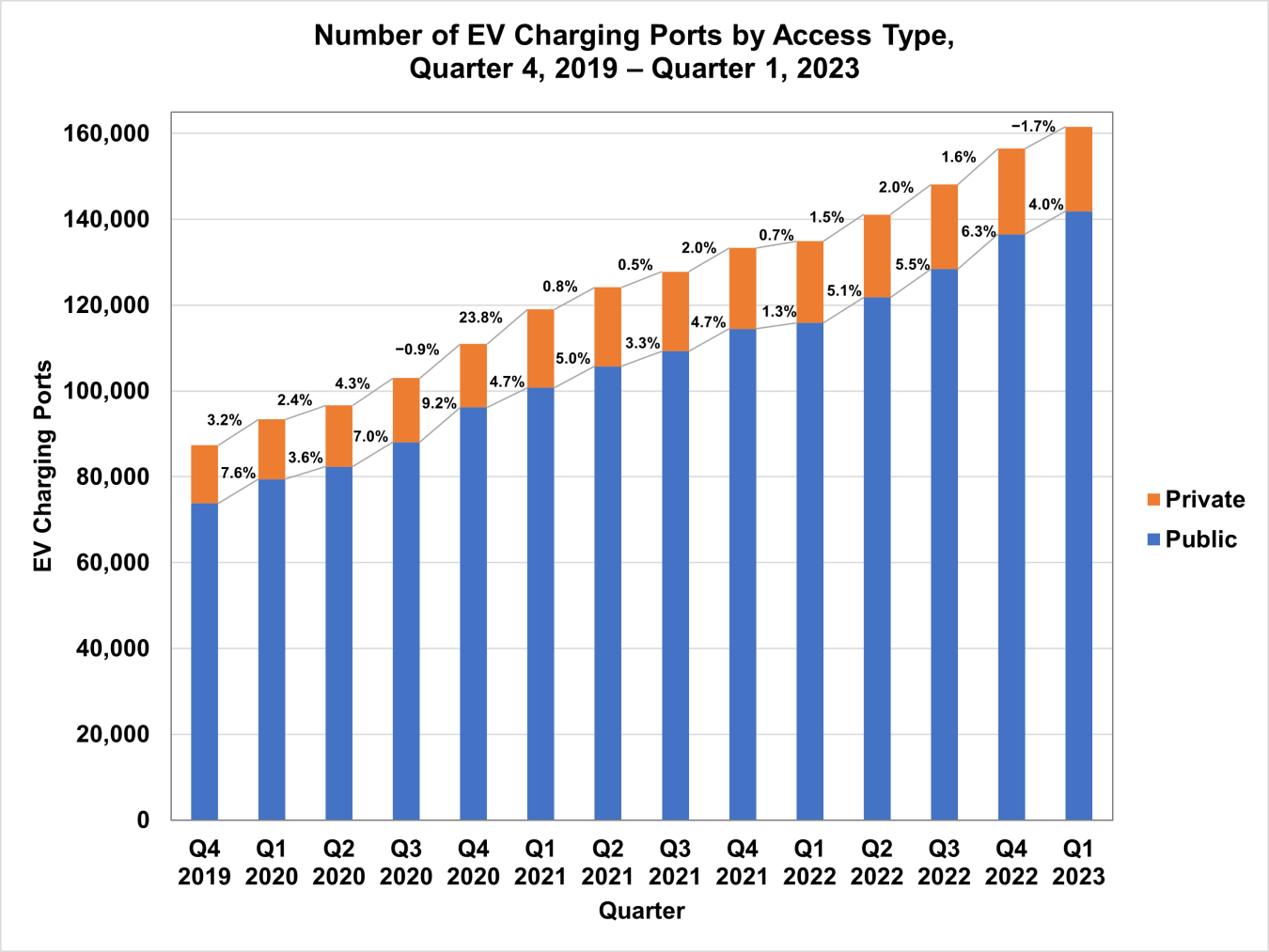From the fourth quarter of 2019 to the first quarter of 2023, the number of public and private electric vehicle (EV) charging ports nearly doubled from 87,352 to 161,562.
July 17, 2023From the fourth quarter of 2019 to the first quarter of 2023, the number of public and private electric vehicle (EV) charging ports nearly doubled from 87,352 to 161,562. Public charging has experienced growth in every quarter since 2019. In the first quarter of 2023, public charging ports accounted for about 88% of all charging ports. The number of charging ports is an important measure of available EV infrastructure and represents the number of EVs that can charge simultaneously at charging stations across the country. Unlike gasoline vehicles that can only be refueled at filling stations, many EVs are charged at home, but public charging is still important to support long-distance travel and for those without access to home charging.

Notes:
- Percentages in figure represent the percent growth between each quarter.
- Charging ports are the number of individual outlets available to charge a vehicle (i.e., the number of vehicles that can simultaneously charge at a charging station).
- Includes public and private level 1, level 2, and DC fast chargers.
- Private includes workplace, commercial, and fleet charging that is not open to the public. It does not include residential charging.
Source: National Renewable Energy Laboratory, Electric Vehicle Charging Infrastructure Trends from the Alternative Fueling Station Locator: Fourth Quarter 2022, NREL/TP-5400-85801, May 2023 and preliminary quarter 1 data from NREL, 2023.

